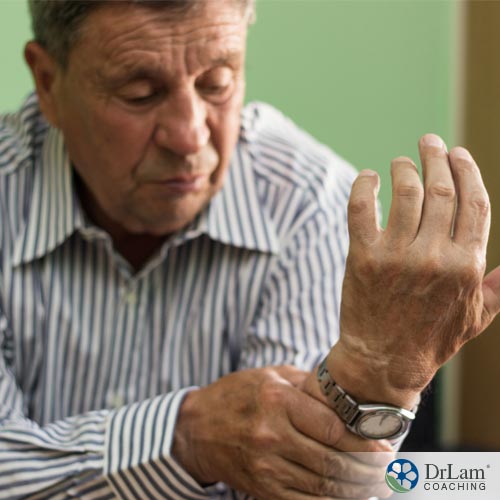If you could lower your chances of needing surgery, would you do it? Carpal tunnel is something that affects almost everyone once in their lifetime. Although it is caused by a combination of lifestyle and genetics, if ignored, it could lead to the need for surgery. Fortunately, carpal tunnel could be managed by doing carpal tunnel exercises, so long as they are properly executed and done consistently.
 Carpal tunnel syndrome, or CTS, is the result of compression of the median nerve located in the wrist. It can cause numbness, stiffness, and pain in the hand and fingers. The median nerve travels through a narrow tunnel in the wrist made of bone and ligament and gives feeling to the thumb and fingers. If there is any swelling in the wrist, the tunnel gets squeezed and the median nerve becomes pinched, causing carpal tunnel symptoms.
Carpal tunnel syndrome, or CTS, is the result of compression of the median nerve located in the wrist. It can cause numbness, stiffness, and pain in the hand and fingers. The median nerve travels through a narrow tunnel in the wrist made of bone and ligament and gives feeling to the thumb and fingers. If there is any swelling in the wrist, the tunnel gets squeezed and the median nerve becomes pinched, causing carpal tunnel symptoms.
With CST, your grip often becomes weaker, and you may find it harder to move your fingers. CTS is usually more noticeable in the first and middle fingers of the dominant hand. However, it may affect the whole hand. It is usually most painful in the morning when the hands have remained motionless and curled up through the night.
Although many of the carpal tunnel cases are due to strain and overuse, there are a variety of health conditions that can also cause symptoms such as diabetes, hypothyroidism, high blood pressure, arthritis, or traumas to the wrist.
Doctors or healthcare providers generally manipulate the hands to generate tingling or other symptoms, or give a nerve conduction velocity test to measure the speed of impulses as they pass through the carpal tunnel.
Although it is true that the forces that cause carpal tunnel syndrome are in fact purely physical in nature, such as the nerves being compressed, recent research has shown that tendon swelling can occur due to the body’s reaction to chronically high stress.
The body has a global response to stress. When stress begins, the NeuroEndoMetabolic (NEM) Stress Response system kicks in to deal with it. All six organ systems of the NEM are affected. When stress is chronic, it can cause these organ systems to become strained and develop dysfunction. One such dysfunction is inflammation spreading throughout the body, particularly in the extremities.
Stress may not directly cause of carpal tunnel. However, it can produce the chronic inflammation that affects the tunnel and median nerve, increasing the risk factors for developing this painful ailment.
 Carpal tunnel is common among pregnant women, especially if they gain more than 35 pounds during pregnancy, are expecting more than one baby, or if their breasts have gotten bigger. All these factors can contribute to exerting more pressure on the shoulders, ribs, and arms and can affect the median nerve.
Carpal tunnel is common among pregnant women, especially if they gain more than 35 pounds during pregnancy, are expecting more than one baby, or if their breasts have gotten bigger. All these factors can contribute to exerting more pressure on the shoulders, ribs, and arms and can affect the median nerve.
CTS usually disappears within three months of giving birth, although it may show up again during menopause.
There are a number of occupations that have been linked to carpal tunnel syndrome. In this case, carpal tunnel is usually caused by the repetition of hand movements over years. Professions in which CTS is common include:
Painter, gardeners, hairdressers, musicians, butchers, and locksmiths are among the many professions that utilize their hands in their work, and all are candidates for developing occupational induced carpal tunnel syndrome.
Stopping for brief moments throughout your day to stretch and exercise your hands with exercises such as the ones listed below could potentially save you from pain and possible surgery in the future.
Here are a few carpal tunnel exercises you can do anytime during the day whether sitting, standing, or waiting in the line at the grocery store. They don’t require any machinery or equipment. Just a few minutes of your time each day could aid in the health of your fingers, hands, and wrists.

Stretching should be incorporated into your everyday activities. It is a very important part of a healthy lifestyle to keep the muscles, ligaments, and joints agile. Every part of your body can benefit from increased movement and mobility. It is also worth to mention, that you need to pay attention to the fact that you have to promote physical health while aging in order to escape problems with your wrists and general health. Don’t just limit your stretching regimen to the exercises listed above, try to incorporate a total body stretching sequence daily.
Aside from daily carpal tunnel exercises, there are a few habits that can help ward off or prevent flare-ups.

The carpal tunnel exercises suggested above are great options. However, for more severe cases, your doctor may suggest corticosteroid injections, surgery, or physical therapy if the suggestions above don’t improve or relieve your symptoms.
In some cases, disruptions in the endocrine system and hormonal imbalances can result in carpal tunnel syndrome. For example, when the adrenal glands are dysfunctional, they cannot adequately produce the natural steroids needed to reduce inflammation and swelling. Those with Adrenal Fatigue Syndrome (AFS) are more prone to these problems than others. Many AFS patients with carpal tunnel syndrome need steroids administered in medications if carpal tunnel exercises and splints are not relieving any symptoms. This can be a double-edged sword, however, as steroids may worsen adrenal fatigue as well if it is severe enough.
Carpal tunnel syndrome can also result from thyroid disease. It is uncertain whether it is caused by the excessive swelling, the hormonal imbalance, or a combination of the two.
If you are suffering from carpal tunnel syndrome, it is important to contact a healthcare practitioner and begin exercises immediately. Quick attention to carpal tunnel could relieve symptoms before they become painful or worse, leading to the need for advanced measures including surgery. In severe cases, it could also be a side effect of an underlying illness and this should be examined to ensure you are best able to support your health.
Carpal tunnel exercises can definitely be done preventatively especially by those engaged in activities or jobs using their hands in repetitive motions for many hours during the day like typing or hammering. Taking a few minutes every hour can prevent pain and the need for surgery.
